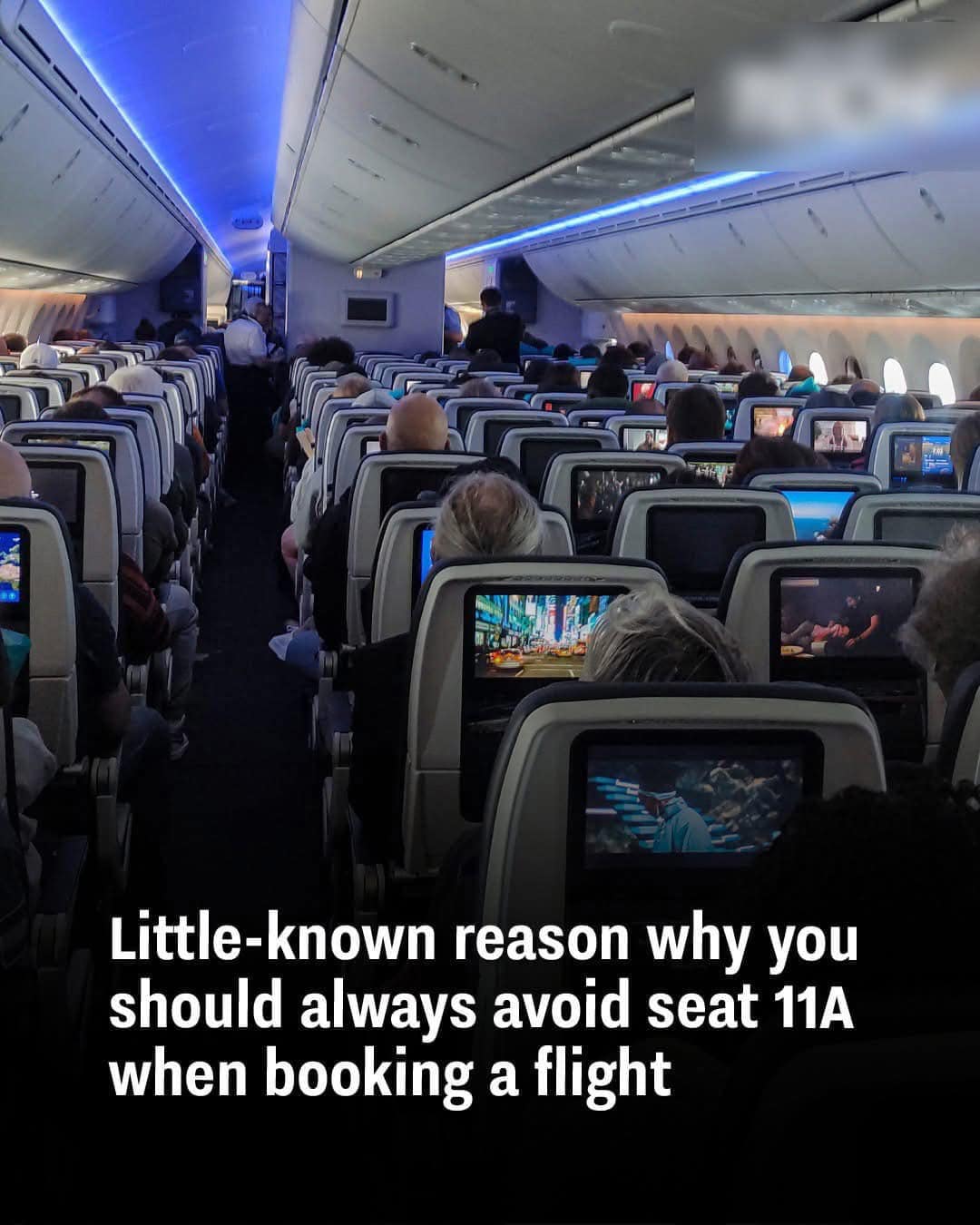When booking a flight, most passengers have their preferences—some want an aisle seat for easy access to the restroom, others prefer a window seat for the view and a place to lean against during naps. But if you’re someone who values that scenic aerial view, there’s one seat you should absolutely avoid: Seat 11A. While it might seem like just another window seat on the airline’s seating chart, travelers who’ve been stuck in this spot know all too well that it comes with a frustrating little secret—there’s essentially no window.

The Mystery Behind Seat 11A
On many Boeing 737-800 aircraft, particularly those operated by budget airlines like Ryanair, Seat 11A looks like a regular window seat on the booking diagram. However, when you actually settle into your spot and glance to your left, you’ll notice something disappointing: instead of a proper window, there’s either a tiny, obstructed circular peephole or no window at all. You might be left staring at a blank wall, completely robbed of the panoramic sky views many passengers cherish during a flight.
But why is this the case? According to aviation experts from FlightRadar24, the explanation lies in the plane’s air conditioning system. Modern commercial jets, including the Boeing 737-800, have highly sophisticated air systems to maintain cabin airflow and temperature. These systems are powered by two primary air conditioning “packs,” which distribute air throughout the cabin via ducts hidden behind the aircraft’s sidewalls.
Unfortunately for passengers in Seat 11A, one of these ducts is located precisely at this spot. This design requirement means there’s simply no space for a regular window in that section of the cabin. Instead of an open view of fluffy clouds or a glowing sunset, passengers in this seat are left with a blocked or partially obstructed view.
A Tale of Two Sides: Seat 11A vs. Seat 11F
Adding insult to injury, if you glance across the aisle at Seat 11F, you’ll notice that passengers there have a perfect, unobstructed window view. It feels almost unfair—two people in the same row, sitting by the “window,” but only one gets the scenic experience. In contrast, Seat 11A passengers are left awkwardly craning their necks across the row in a futile attempt to catch a glimpse of the horizon from someone else’s window.
To make matters worse, the seats immediately behind—12A and 12F—also suffer from subpar views. While they do technically have windows, the alignment is slightly off, and the view is often obstructed by the aircraft’s structural elements. But even those unlucky passengers are still in a better position than someone stuck in Seat 11A, where the window is essentially nonexistent.
Planning Ahead to Avoid 11A
So, how do you make sure you never fall victim to this unfortunate seating arrangement? Thankfully, there are tools available to help savvy travelers avoid a windowless surprise. Websites like AeroLOPA provide detailed seating charts for almost every commercial airline, including accurate layouts of window placements, legroom availability, and potential obstructions. Before confirming your seat selection, a quick glance at these diagrams can save you from the disappointment of discovering a missing window after boarding.
It’s not just about the view, either. For many travelers, having a window seat provides a sense of comfort, privacy, and even a psychological buffer against the sometimes cramped feeling of an airplane cabin. Being stuck at Seat 11A without the expected view can make an already tight space feel even more claustrophobic.
The Hidden Advantage of Seats D, E, and F
Interestingly, on most Boeing 737-800 planes, seats located on the right side of the aircraft—specifically D, E, and F—offer slightly more legroom than their counterparts on the left. This asymmetry comes down to the layout of the plane’s internal systems and structural design. So, if legroom is just as important to you as having a proper window view, choosing a seat on the right-hand side might provide a double advantage.
Why Airlines Don’t Fix the Problem
You might be wondering why airlines don’t simply eliminate Seat 11A or mark it as a non-window seat during booking. The truth is that airlines prioritize maximizing seating capacity over passenger comfort when it comes to non-premium seats. While some carriers are upfront about the quirks of certain seats—highlighting them as “restricted view” during booking—many budget airlines don’t bother to disclose this information. After all, every seat on the plane represents potential revenue, and it’s unlikely most passengers will refuse a flight just because of one obstructed window.
Final Thoughts: Avoid Seat 11A at All Costs
The next time you’re booking a flight, especially with airlines operating Boeing 737-800 aircraft, take a moment to double-check the seating chart. Avoiding Seat 11A is one of those little travel hacks that can make your flight experience significantly better. Whether you’re someone who enjoys gazing out at the clouds, snapping photos from above, or simply using the window as a makeshift pillow, Seat 11A will only leave you disappointed.
Instead, aim for rows where the window placement aligns properly with the seat, or opt for the right-hand side of the aircraft for a little extra legroom. In the world of modern air travel, where comfort can feel like a luxury, every little detail counts. So, book wisely, and let Seat 11A remain a cautionary tale for future travelers.





